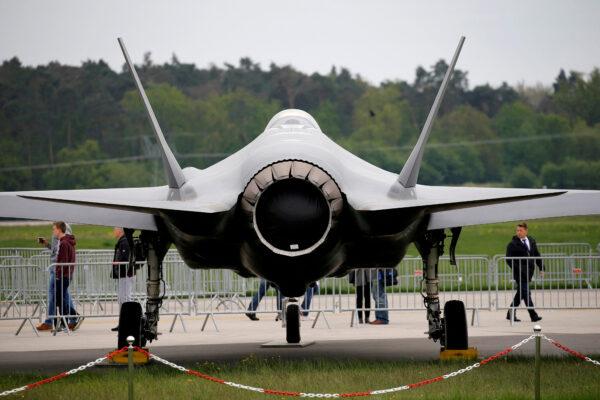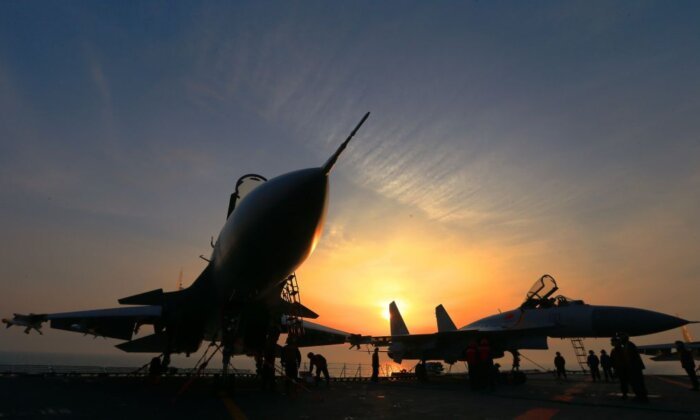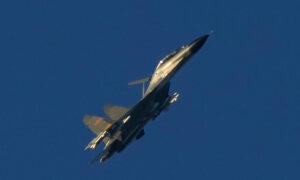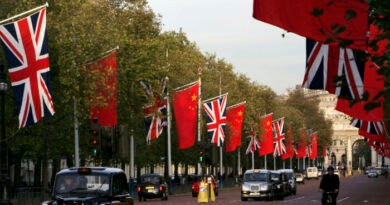Analysts say China’s new fighter J-35 is no match for the F-35
“The CCP often utilizes reverse engineering, and their capacity for innovation is limited,” stated a Taiwanese military expert.
China’s J-35 fighter jet is poised for deployment from a Chinese aircraft carrier and is purportedly capable of challenging the U.S. military’s F-35, as per recent Chinese media reports amidst escalating tensions over the Taiwan Strait.
Despite this, analysts have pointed out that the F-35 possesses distinct advantages in stealth capability, avionics, engines, and other performance aspects over the J-35, indicating that they are not evenly matched.
Chinese media outlets, including Tencent, reported that a “green version of the J-35” was observed during the third sea trial of China’s third aircraft carrier, the Fujian, earlier this month and could have been prepared for real-time deployment.
As outlined in Chinese media reports, the structure and external configuration of this aircraft bear striking resemblance to the F-35, signaling the intent for this fighter to rival the U.S. military’s F-35.
The J-35 was developed by the state-owned Shenyang Aircraft Industry Group of China and made its public debut at the Zhuhai Air Show in 2014 under the codename FC-31 “Falcon.” This aircraft is commonly viewed in mainland Chinese media reports as China’s forthcoming aircraft carrier-based aircraft, known as the J-35.
Sheu Jyh-Shyang, an assistant researcher at the Institute of Chinese Political, Military, and Operational Concepts at Taiwan’s Institute for National Defense and Security Research, told The Epoch Times, “What we know is that the CCP [Chinese Communist Party] often resorts to reverse engineering, and their innovation is constrained. The PLA’s primary fighter jets, from the J-11 series to the J-16, are predominantly imitations and reverse engineering of the Russian Su-27 and Su-30, with minimal original components. Constructing an aircraft entirely from scratch is evidently a challenging task for the CCP’s current aerospace industry,” utilizing the abbreviation for the CCP’s military, the People’s Liberation Army (PLA).
Retired Maj. Gen. Yu Tsung-chi in Taiwan, an adviser to the Formosa Republican Association, informed The Epoch Times that the CCP’s military strategic approach involves replicating any weapons platforms possessed by the United States, “but lacking the research groundwork or R&D capabilities, the only recourse is to illicitly acquire Western technology.”
“The crux of the matter is that technology theft only grants access to technology at the time of theft, whereas U.S. military technology consistently advances and achieves breakthroughs. The subsequent performance improvements are beyond imitation by the CCP. Additionally, products produced through imitation or theft seldom surpass the original design’s performance in all facets,” Mr. Yu remarked.
Shen Ming-shih, a research fellow and director of the Division of National Security Research at Taiwan’s Institute for National Defense and Security Research, informed The Epoch Times that the CCP seeks to pilfer or adopt numerous military technologies from the United States through various means. “For instance, the J-20 imitated the U.S. F-22, the J-31 imitated the F-35, and even the heavy bomber H-20 blatantly imitated the B2.”
“Due to the inability to conduct independent research and development, the CCP’s own foundation in basic science, materials science, and system or combat systems development are impacted,” Mr. Shen stated.

“While it can replicate and learn from foreign blueprints, the materials or metals used by others are of superior quality, while its own materials and metals do not measure up. Moreover, in terms of system integration, though it can mimic others’ systems, the integration efficacy may fall short. Hence, while the replicas may visually resemble the originals, their actual combat power may only reach 70 to 80 percent [of the original].”
F-35 Advantages
Contrasted with the J-35, the primary advantage of the F-35 lies in its stealth technology. The F-35 design incorporates radar-absorbing materials and a distinctive fuselage shape, significantly reducing the radar cross-sectional area, as per the experts and public reports.
Mr. Sheu mentioned that U.S. fighter jets typically utilize paint to enhance their stealth capabilities. “The United States remains the sole nation with this capability. The extent to which the CCP has acquired this technology remains undisclosed.”

Another crucial advantage of the F-35 lies in its sophisticated sensors and avionics. Equipped with an AN/APG-81 AESA radar, the F-35 possesses exceptional tracking, targeting, and electronic warfare capabilities. The distributed aperture system (DAS) grants the F-35 a complete 360-degree situational awareness, enabling pilots to detect and counter threats from all directions. The electro-optical targeting system (EOTS) integrates targeting, infrared search and tracking, and laser designation functions. This comprehensive sensor fusion system surpasses the capabilities of China’s J series fighter jets, endowing F-35 pilots with unparalleled situational awareness and combat prowess.
Mr. Yu noted that figures provided by the CCP suggest that the detection range of the J-35 is comparable to that of fifth-generation fighter jets and Taiwan’s S6V. “Yet, the disparity lies in the fact that Western figures are based on actual combat parameters, while CCP data reflects experimental parameters, creating a substantial discrepancy between the two.”
Aircraft engines have consistently presented a weakness in China’s aviation industry. Reports indicate that the CCP’s military aircraft engines lack necessary thrust and have a limited lifespan. This forms a crucial target for the CCP’s technology theft initiative in support of “Made in China 2025,” as per the experts.
Mr. Yu highlighted the main issue with China-manufactured fighter jets being the inadequate thrust of the aircraft’s engine. Additionally, the engine’s lifespan is purportedly less than one-third that of U.S. military engines.
He added, “Another challenge is the severe shortage of qualified pilots for the CCP’s new fighter jets, which remains a primary reason for external skepticism regarding the air combat capabilities of its new generation of fighter jets. Software operation and training of fifth-generation fighter pilots present significant complexities.”
Song Tang and Yi Ru contributed to this report.






